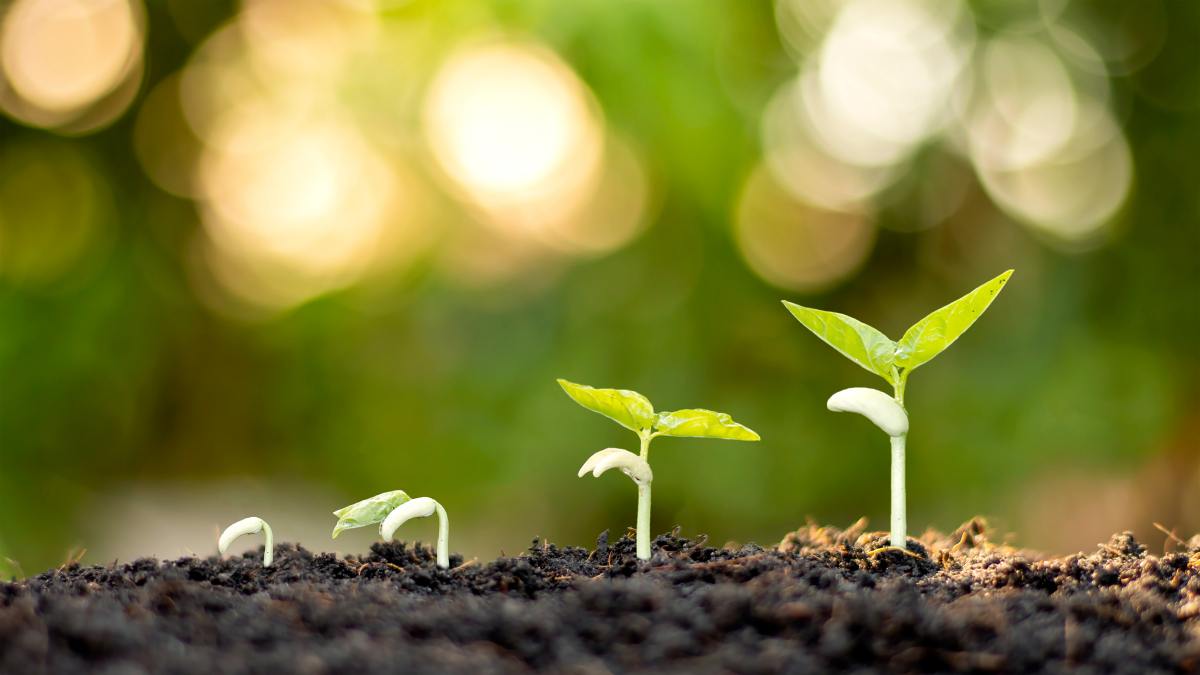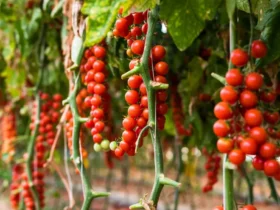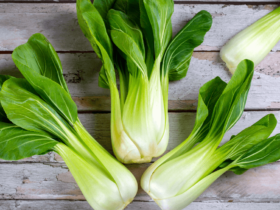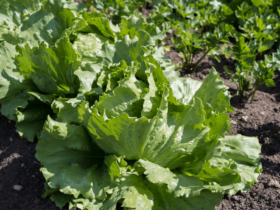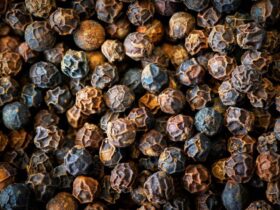Stages of Growing Cucumbers in four stages: germination, seedling growth, flowering, and fruiting. In the germination stage, seeds absorb water and sprout roots.
During seedling growth, stems and leaves emerge, and the plant begins to photosynthesize. Once the plant reaches the flowering stage, it produces male and female flowers. Finally, in the fruiting stage, the female flowers are pollinated and develop into cucumbers.
Each stage is crucial for the successful growth of cucumber plants. Proper care, including providing sunlight, water, and nutrients, is essential at every stage to ensure healthy cucumber production.
Choosing The Right Seeds
Growing cucumbers can be an exciting and rewarding endeavor, and one of the crucial factors in ensuring a successful harvest is choosing the right seeds. When it comes to cucumbers, there are various varieties to choose from, each with its own unique qualities and growing requirements. In this section, we will explore the key considerations to keep in mind when selecting cucumber seeds, including the variety and seed viability.
Consider The Variety
Before starting your cucumber journey, it is important to consider the variety of cucumbers you want to grow. Different varieties have different characteristics, such as size, shape, and taste, so selecting the right one can greatly impact your overall cucumber-growing experience. Some popular cucumber varieties include:
| Variety | Characteristics |
| Bush Pickle | Compact plants suitable for container gardening. |
| English Telegraph | Long and slender cucumbers, perfect for slicing. |
| Lemon Cucumber | Round, yellow cucumbers with a mild flavor. |
Check For Seed Viability
Once you have decided on the cucumber variety, it’s essential to check the viability of the seeds before planting. Seeds that are not viable may not germinate or produce strong and healthy plants. To ensure seed viability, follow these steps:
- Perform the “Float Test”: Place the seeds in a bowl of water and discard any that float to the top, as they are less likely to germinate.
- Perform the “Paper Towel Test”: Moisten a paper towel, place the seeds on it, fold it, and keep it in a warm place. If the seeds sprout within a few days, they are likely viable.
- Check the Seed Packet: Seed packets usually come with a “sow by” date. It is best to choose seeds that are within their recommended planting period.
By selecting cucumber varieties suited to your preferences and ensuring the viability of your seeds, you are setting a strong foundation for your cucumber-growing journey. In the next section, we will explore the importance of providing the ideal growing conditions for your cucumber plants to thrive.

Starting Seeds Indoors
When it comes to growing cucumbers, starting seeds indoors can give you a head start and increase your chances of a successful harvest. By providing a warm and controlled environment, you can give your cucumber seeds the perfect conditions to germinate and establish strong seedlings. In this article, we will guide you through the essential steps of starting cucumber seeds indoors, from gathering supplies to sowing the seeds.
Gather Supplies
To get started with indoor seed starting, you’ll need a few supplies:
- Seed packets: Choose cucumber seeds that are well-suited for your climate and personal preferences. There are various cucumber varieties, such as slicers, picklers, or specialty types.
- Seedling trays: Select trays that have drainage holes and are at least 2-3 inches deep. Consider using biodegradable pots or trays made from peat or coconut fiber to avoid disturbing the delicate roots during transplant.
- Seed starting mix: Use a light and sterile mix specifically formulated for seedlings. Avoid using garden soil, as it may contain diseases or pests that could harm the young plants.
- Plant labels: These will help you keep track of your cucumber varieties and planting dates.
- Watering can or spray bottle: Opt for a gentle watering method to avoid displacing the tiny seeds.
- Grow lights or a sunny window: Cucumber seedlings need about 12-16 hours of light per day to grow strong and healthy. If you don’t have a bright window, consider investing in grow lights.
Prepare Seedling Trays
Before sowing the cucumber seeds, it’s essential to prepare the seedling trays to provide an optimal growing environment. Follow these steps:
- Clean the trays: Ensure your trays are clean and free from any previous plant debris. This prevents the risk of diseases.
- Add seed starting mix: Fill the trays with seed starting mix, leaving about ½ inch space from the top. Gently press the mix to eliminate any air pockets.
- Moisten the mix: Water the mix until it’s evenly moist, but not soaking wet. Excess moisture can cause damping-off, a fungal disease that affects seedlings.
- Make planting holes: Use a pen or pencil to create small planting holes about ¼ inch deep. Space the holes at least 2 inches apart to give the seedlings room to grow.
Sow The Seeds
Now that your trays are ready, it’s time to sow the cucumber seeds:
- Place the seeds: Put one or two cucumber seeds in each planting hole. If using multiple seeds, thin them out later to ensure proper spacing.
- Cover the seeds: Gently cover the seeds with a thin layer of the seed starting mix. The general rule of thumb is to cover them with a layer about twice the thickness of the seed.
- Mist the tray: Use a water spray bottle to moisten the top layer of the seed starting mix. Be careful not to displace the seeds or create soggy conditions.
- Provide warmth and light: Place the seedling trays in a warm area with a temperature around 70-80°F (21-27°C). If using grow lights, position them about 2-4 inches above the trays.
- Monitor and water: Keep a close eye on the trays and ensure the soil remains moist but not soggy. Use a gentle watering method so as not to disturb the seeds.
These steps will help you kickstart your cucumber growing journey by successfully starting the seeds indoors. Once your seedlings have grown a few inches tall and have developed a sturdy root system, you can look forward to transplanting them into your garden or larger containers.
Providing Optimal Growing Conditions
Growing cucumbers can be a rewarding experience, but to ensure a successful harvest, it’s important to provide optimal growing conditions for your cucumber plants. From selecting the right location to preparing the soil and ensuring proper drainage, these steps will help set your cucumbers up for success.
Select A Sunny Location
When it comes to growing cucumbers, sunlight is a key ingredient for success. Choose a sunny location with at least 6-8 hours of direct sunlight each day. Cucumbers thrive in warm temperatures and need plenty of light to produce healthy and abundant fruit. By placing your cucumbers in a sun-drenched spot, you’ll be giving them the energy they need to grow strong and vibrant.
Prepare The Soil
The quality of your soil plays a crucial role in the growth and development of cucumber plants. Before planting, take the time to prepare the soil to ensure it’s nutrient-rich and well-draining. Start by removing any weeds or debris from the area. Then, incorporate organic matter such as compost or well-rotted manure into the soil. This will help improve its fertility and drainage, creating an ideal environment for cucumber roots to thrive. Remember to break up any clumps and level the soil surface before moving on to the next step.
Ensure Adequate Drainage
Adequate drainage is essential for cucumber plants, as they are susceptible to root rot and fungal diseases when sitting in waterlogged soil. To ensure proper drainage, consider adding organic matter to the soil as mentioned earlier, or using raised beds or containers. These options allow excess water to drain away more efficiently, preventing water buildup around the roots. Additionally, you can incorporate coarse sand or perlite into the soil mixture to improve drainage further. By implementing these drainage techniques, you’ll be providing your cucumber plants with the conditions they need to grow healthy and strong.

Transplanting Seedlings
Transplanting seedlings is a critical stage in the growth of cucumbers. This process involves carefully moving the young plants from their indoor containers to the outdoor garden bed. By transplanting seedlings, you are providing them with a better environment and more space to thrive. This article will guide you through the necessary steps for successfully transplanting your cucumber seedlings.
Harden Off The Seedlings
Before transplanting your cucumber seedlings, it is important to harden them off. This process helps acclimate the delicate plants to the outdoor conditions gradually. Start by placing the seedlings in a sheltered area outdoors for a few hours each day, gradually increasing their exposure to the sun and wind over a period of one to two weeks. This gradual transition prepares the seedlings for the harsher conditions of the garden bed, preventing shock and ensuring their survival.
Prepare The Planting Area
Once the cucumber seedlings have been hardened off, it’s time to prepare the planting area. Choose a location that receives at least six hours of direct sunlight daily and has well-drained soil. Cucumbers thrive in soil that is rich in organic matter, so amend the soil with compost or aged manure prior to planting. Make sure to remove any weeds or debris from the area and loosen the soil to facilitate root growth.
Carefully Transplant Seedlings
Now that you have hardened off the seedlings and prepared the planting area, it’s time to transplant your cucumber seedlings. Here are the steps to follow:
- Choose the optimal time: Transplant your cucumber seedlings when all risk of frost has passed and the soil has warmed up. Cucumbers are warm-season plants and require temperatures above 60°F (15°C) for optimal growth.
- Prepare the holes: Dig holes in the garden bed that are slightly larger than the size of the seedling’s root ball. Space the holes about 12 to 24 inches apart to allow adequate room for each cucumber plant to grow.
- Remove the seedlings from their containers: Gently loosen the seedling from its container, being careful not to damage the delicate roots. If the roots are tightly bound, use your fingers to gently tease them apart.
- Place the seedlings in the holes: Carefully place each seedling into the prepared hole, making sure that the plant is at the same depth it was growing in its container. Firmly press the soil around the seedling to eliminate any air pockets.
- Water thoroughly: After transplanting, water the cucumber seedlings thoroughly to help settle the soil and provide moisture to the roots. Keep the soil consistently moist but not waterlogged to promote healthy growth.
By following these steps, you can ensure a successful transplant of your cucumber seedlings, setting them up for healthy growth and a bountiful harvest.
Caring For Growing Plants
Growing cucumbers can be a rewarding experience, and caring for your plants properly is essential to ensure healthy growth and abundant harvest. Cucumbers require specific care in terms of watering, mulching, fertilizing, and pruning. By following these stages, you can help your cucumber plants thrive and produce delicious fruits.
Watering
Watering your cucumber plants adequately is crucial for their growth. Cucumbers have shallow roots, so it’s important to provide consistent moisture. Aim to water the plants deeply, ensuring the soil is evenly moist but not overly saturated. You can water the plants in the morning to allow the foliage to dry during the day, preventing the onset of diseases. Additionally, using a drip irrigation system or a soaker hose can help deliver water directly to the roots while minimizing evaporation.
Mulching
Mulching is a beneficial practice for growing cucumbers. Applying a layer of organic mulch around the plants helps retain soil moisture, suppress weed growth, and regulate soil temperature. Use materials like straw, wood chips, or compost as mulch, spreading it around the base of the plants while avoiding direct contact with the stems. Mulching also prevents soil splashing onto the leaves, reducing the risk of diseases.
Fertilizing
Fertilizing your cucumber plants ensures they receive the necessary nutrients for healthy growth and abundant fruit production. Before planting, incorporate well-rotted organic matter, such as compost or aged manure, into the soil. This will provide a slow-release of nutrients over time. Once the plants start growing, you can supplement with a balanced fertilizer rich in nitrogen, phosphorus, and potassium. Apply the fertilizer according to the manufacturer’s instructions, avoiding excessive amounts that may burn the plants.
Pruning And Training
Pruning and training cucumber plants help maintain their growth, improve air circulation, and maximize fruit yield. Begin by removing any damaged or diseased leaves regularly. As the plants grow, consider providing them with vertical support, such as trellises or stakes, to prevent sprawling and promote upward growth. This also makes it easier to harvest the cucumbers. Additionally, thin out excessive foliage to allow sunlight to reach the inner parts of the plant, ensuring even ripening of the fruits.

Pollination And Fruit Set
Pollination is a crucial stage in the growth of cucumbers as it triggers fruit set. During this process, the transfer of pollen from the male to the female flowers helps in the development of healthy and abundant cucumbers.
Understanding Female And Male Flowers
Before we delve into the fascinating process of pollination and fruit set, it’s crucial to understand the difference between female and male cucumber flowers. Female flowers, identifiable by their miniature cucumber-shaped structure known as the ovary, are where the fruit eventually develops. On the other hand, male flowers have a long stem and a slender structure without an ovary.
Did you know that cucumbers rely on the process of pollination to bear fruit? Pollination occurs when pollen from the male flower reaches the stigma of the female flower. This transfer of pollen initiates the development of the fruit.
Hand Pollination
In some cases, cucumber plants may not receive adequate pollination due to environmental or other factors. This can result in poor fruit set, where the flowers fail to turn into cucumbers. However, you can take matters into your own hands by practicing hand pollination.
Hand pollination involves transferring pollen from the male flower to the stigma of the female flower using a small brush or cotton swab. Gently brush the inside of the male flower to collect the yellow pollen and then transfer it to the stigma of the female flower. Repeat this process for multiple flowers to help ensure successful pollination.
Encouraging Natural Pollinators
While hand pollination can be effective, it can also be time-consuming, especially if you have numerous cucumber plants. To make the process easier and more efficient, it’s beneficial to attract and encourage natural pollinators.
Bees and other insects are excellent pollinators for cucumbers. You can create a pollinator-friendly environment by planting flowers that attract bees such as marigolds or lavender near your cucumber plants. These flowers not only provide food sources but also entice pollinators to visit your garden.
Additionally, avoid using pesticides as they can harm the beneficial pollinators. Instead, utilize organic pest control methods that target harmful pests but spare the helpful insects.
Remember, pollination is a vital step in the cucumber growing process, and understanding the roles of female and male flowers can significantly improve fruit set. Whether you choose hand pollination or encourage natural pollinators, ensuring successful pollination will lead to a bountiful harvest of fresh, delicious cucumbers.

Dealing With Common Pests And Diseases
Growing your own cucumbers can be a rewarding experience, but it’s not without its challenges. Just like any other plant, cucumbers are susceptible to pests and diseases that can hinder their growth and potentially ruin your harvest. In this section, we will explore the most common cucumber pests and diseases and provide tips on how to identify and manage them effectively.
Identifying Common Cucumber Pests
It’s important to be able to identify the pests that commonly afflict cucumbers so that you can take the necessary steps to protect your plants. Here are some of the most prevalent cucumber pests:
| Pest | Description |
| Aphids | Small, pear-shaped insects that suck sap from the plant, causing stunted growth and deformed leaves. |
| Cucumber Beetles | Small, yellow or green beetles that feed on leaves, flowers, and fruit, spreading disease and causing defoliation. |
| Spider Mites | Microscopic pests that suck sap from the leaves, causing yellowing, stunted growth, and webbing on the plants. |
Preventing And Treating Diseases
Aside from pests, cucumbers can also be vulnerable to a range of diseases. Here are some tips to prevent and treat cucumber diseases:
- Downy Mildew: This fungal disease appears as yellow spots on the upper surface of leaves and can cause a white, downy growth on the undersides. Regularly inspect your plants and promptly remove any infected leaves to prevent further spread.
- Powdery Mildew: A common fungal disease that leaves a powdery white coating on the leaves, stems, and fruit. Ensure good airflow around your plants by spacing them properly and apply a fungicide if necessary.
- Root Knot Nematodes: These microscopic worms attack the roots, causing stunted growth and nodules on the roots. Rotate your crops annually and choose nematode-resistant cucumber varieties.
- Anthracnose: A fungal disease that causes circular, sunken lesions on the fruit. Practice crop rotation, water at the base of plants instead of overhead, and remove and destroy infected plants to prevent spreading.
By being able to identify common cucumber pests and understanding how to prevent and treat diseases, you can ensure the health and productivity of your cucumber plants. With proper care and attention, you’ll be rewarded with a bountiful harvest of delicious homegrown cucumbers.

Harvesting And Storing
Cucumbers go through different stages of growth, including planting, germination, flowering, and fruit development. Harvesting and storing cucumbers involves picking them when they are ripe, storing them in a cool location, and ensuring proper ventilation to keep them fresh.
Cucumbers are a popular summer vegetable that can be grown in your home garden. Once you have successfully nurtured your cucumber plants through the stages of germination, growth, and flowering, it’s time to reap the rewards of your hard work by harvesting and storing your homegrown cucumbers. In this section, we will discuss how to determine the ideal harvest time, proper techniques for harvesting cucumbers, and tips for storing them to ensure freshness.
Determining Harvest Time
Knowing when to harvest your cucumbers is crucial to achieving the best flavor and texture. Here are a few signs to help you determine the ideal harvest time:
- The size of the cucumber: Cucumbers are typically ready for harvest when they reach a specific size, which may vary depending on the cucumber variety. Check the seed packet or plant label for size guidelines.
- Color: Most cucumbers are ready to be harvested when they have a vibrant green color. However, some varieties may have different color variations when ripe, so refer to the specific variety’s recommendations.
- Firmness: Gently squeeze the cucumber to assess its firmness. A ripe cucumber should be firm but not too hard or excessively soft.
- Avoiding bitterness: Overripe cucumbers may become bitter. Therefore, it’s important to harvest your cucumbers before they become overripe.
Proper Harvesting Techniques
Once you have determined that your cucumbers are ready to be harvested, it’s time to bring out your gardening tools and follow these proper techniques:
- Use sharp scissors or pruners: Instead of pulling or twisting, carefully cut the cucumber stem about a quarter inch above the fruit. This method prevents damage to the plant and other developing cucumbers.
- Harvest in the morning: The morning is the best time to harvest cucumbers as they are usually cooler and have higher water content. This ensures optimal crispness.
Storing Cucumbers
Storing cucumbers properly helps maintain their freshness and flavor for an extended period. Here are some tips for storing your cucumbers:
- Refrigeration is key: Cucumbers are sensitive to heat and can quickly soften or become rot. It’s essential to store them in the refrigerator at temperatures between 45-55°F (7-13°C).
- Avoid moisture buildup: Place your cucumbers in a perforated plastic bag or wrap them loosely in a paper towel to prevent moisture buildup.
- Separate from ethylene-producing fruits: Cucumbers are sensitive to ethylene gas, which can cause them to spoil faster. Keep them away from fruits like bananas, tomatoes, and melons.
- Use them within a week: While cucumbers can stay fresh for up to a week, it’s best to consume them as soon as possible for optimal taste and texture.
Frequently Asked Questions On Stages Of Growing Cucumbers
How Long Does It Take For Cucumber Seeds To Sprout?
Cucumber seeds typically take about 7 to 10 days to sprout, but this can vary depending on the temperature and growing conditions.
What Are The Different Stages Of Cucumber Growth?
Cucumbers go through several stages of growth: germination, seedling, vine development, flowering, fruiting, and harvesting.
How Often Should I Water My Cucumber Plants?
Cucumber plants should be watered regularly, aiming for about 1 inch of water per week. It’s important to keep the soil consistently moist but not waterlogged.
Conclusion
To sum it up, growing cucumbers can be a rewarding experience that requires patience and proper care through each stage. From preparing the soil and planting the seeds to providing sufficient water and sunlight, each step contributes to the success of your cucumber garden.
Remember, regular pruning and regular pest control are essential. By following these stages diligently, you can enjoy a bountiful harvest of delicious cucumbers straight from your garden. Happy growing!
